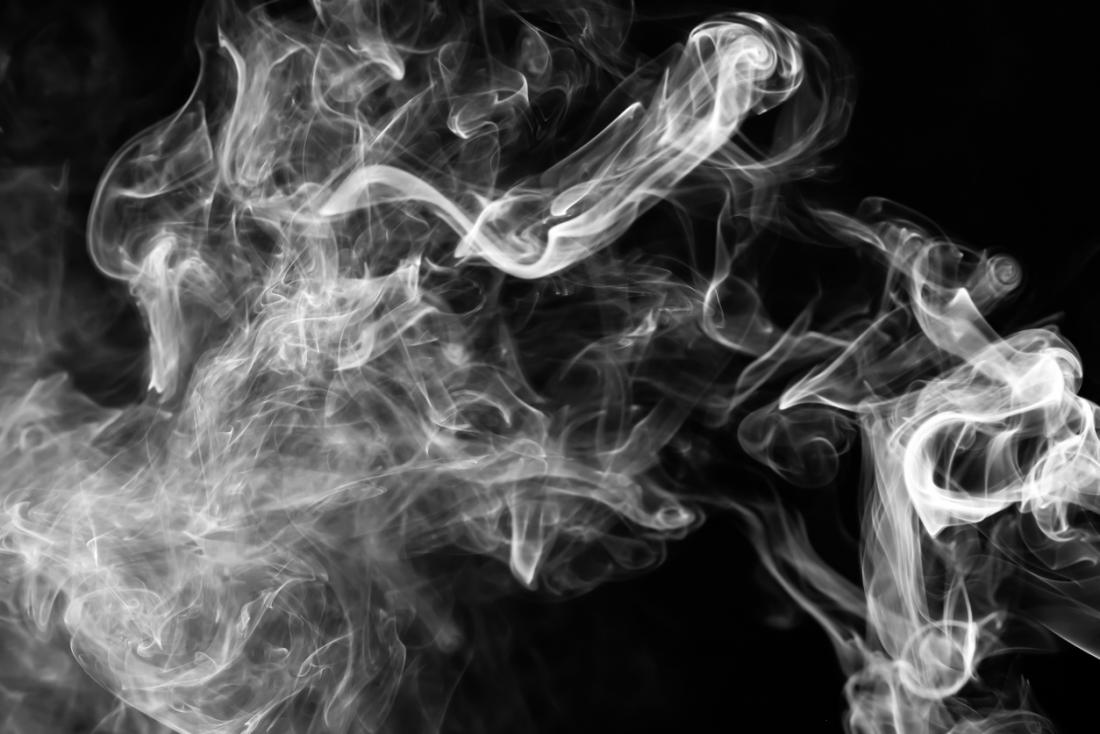
In the journal Cancer Cell, scientists from the Johns Hopkins Kimmel Cancer Center in Baltimore, MD, describe how they used cell-level laboratory experiments to map a series of “epigenetic” events that, over time, may connect exposure to cigarette smoke to lung cancer.
Lung cancer is a disease in which abnormal cells in the lungs grow out of control and form tumors. It is the most common cancer worldwide and accounted for 1.8 million of the 14.1 million estimated cancer cases in 2012, which is the latest year for global statistics.
Cigarette smoking is the leading cause of lung cancer and accounts for 85 percent of all types.
In the United States, lung cancer was responsible for 27 percent of all cancer deaths in 2011. However, after rising for decades, rates of lung cancer in the U.S. are now falling, in line with reducing rates of cigarette smoking.
The new study concerns epigenetics – that is, factors apart from our DNA (such as environment) that can alter the way in which our genes behave. For example, epigenetic changes can “switch genes on and off” and decide which proteins are made in cells.
Epigenetic changes and cancer
Epigenetic changes take various forms, one of which is methylation – or the chemical addition of tiny methyl groups to the start of a gene’s DNA code. This often results in deactivating or “silencing” the gene.
In their study paper, the authors explain that scientists now understand cancer to be a “complex process involving both genetic and epigenetic abnormalities” that can be brought about “through various forms of stress,” such as exposure to cigarette smoke.
However, they note that what is less understood is how specific epigenetic changes might alter key genes and their signaling, and how that, in turn, links to tumor formation in lung cancer.
For their study, the researchers grew human bronchial cells – the type of cell that lines the airways of the lungs – in the laboratory and bathed them with a liquid form of cigarette smoke every day for 15 months.
They note that bathing the cells in this way for this length of time is the equivalent to smoking one to two packs of cigarettes per day for 20 to 30 years.
DNA damage and methylation
The team found that after 10 days, the smoke-exposed cells showed higher amounts of DNA damage compared with cells that had not been exposed to the simulated cigarette smoke.
The DNA damage was the sort that occurs in response to reactive oxygen species, or free radicals, which are oxygen-containing compounds that are known to be present in cigarette smoke.
In the period between 10 days and 3 months of exposure to cigarette smoke, the cells showed a two- to fourfold rise in levels of EZH2, which is a hormone that silences genes. Previous work had shown that this hormone can be a precursor to abnormal DNA methylation.
After the 3-month point, EZH2 leveled off and there was a two- to threefold rise in DNMT1, which is an enzyme that maintains DNA methylation in a variety of genes known as tumor suppressor genes, which normally stop tumor formation.
The enzyme was keeping the DNA methylation in the start location of the genes, effectively silencing the genes and thus blocking them from preventing uncontrolled cell growth.
In the period between 3 months and 6 months of cigarette smoke exposure, the levels of EZH2 and DNMT1 fell away, but their effect on DNA methylation was still present at 10 and 15 months.
The researchers found evidence of reduced expression in hundreds of genes – including BMP3, SFRP2, and GATA4, and other key tumor suppressor genes.
They also found a significant increase – five times or more – in signals related to a cancer-causing gene called KRAS, mutations in which are found in smoking-related cancer.
ers note that they did not find mutations, or changes to underlying DNA, in the KRAS or the tumor suppressor genes. They believe that if the tumor suppressor genes had not been silenced by the smoke exposure, they could have been normally activated and stopped the increase in KRAS signals.
The team suggests that the timing of the events observed in the unfolding sequence may be vital. When they inserted mutations into the KRAS gene in the smoke-exposed cells, they only became cancerous if the insertion occurred after methylation was fully established – that is, after 15 months of cigarette smoke exposure. This did not happen after only 6 months of exposure.
They note that this implies that airway cells become increasingly susceptible to mutations that trigger cancer because the epigenetic changes brought about by exposure to cigarette smoke “build up over time.”
Perhaps quitting smoking may lower the risk of lung cancer in smokers by reducing levels of DNA methylation, says the team.
When they analyzed results from previous studies, they found that smokers who had not touched a cigarette for 10 years had lower levels than current smokers of the type of DNA methylation that they had identified in the new study.
Another implication of the study is that demethylation drugs may help to reduce risk of lung cancer in people who are at higher risk – for example, patients who have undergone surgery for early forms of the cancer.
The team notes that some demethylation drugs are already undergoing clinical trials – as a treatment for a pre-leukemia condition, for instance.
The researchers believe that their findings represent a step toward understanding how cigarette smoking may influence lung cancer risk through epigenetics. They are keen to point out that, as their work was confined to the laboratory, it does not mean that what they discovered necessarily happens in people who smoke.
“Our study suggests that epigenetic changes to cells treated with cigarette smoke sensitize airway cells to genetic mutations known to cause lung cancers.”
[“Source-medicalnewstoday”]
